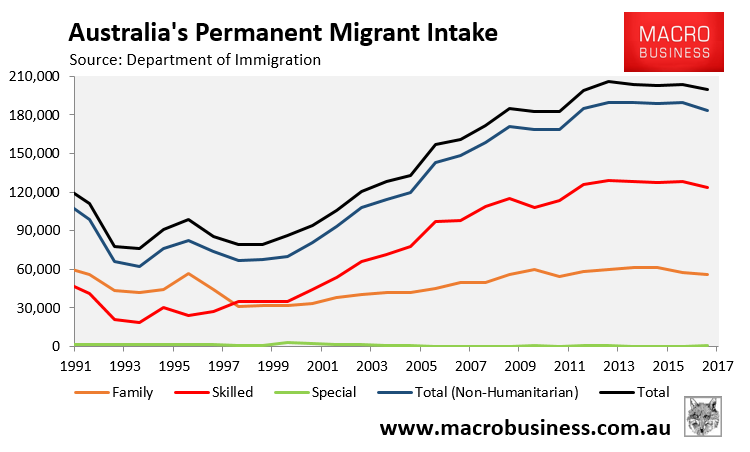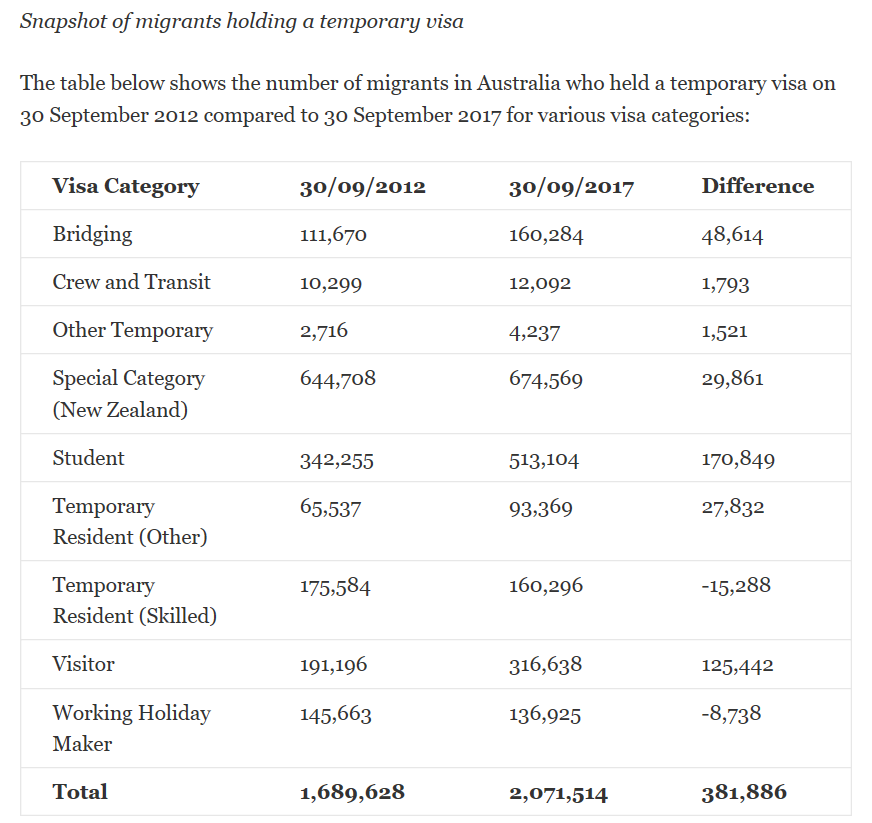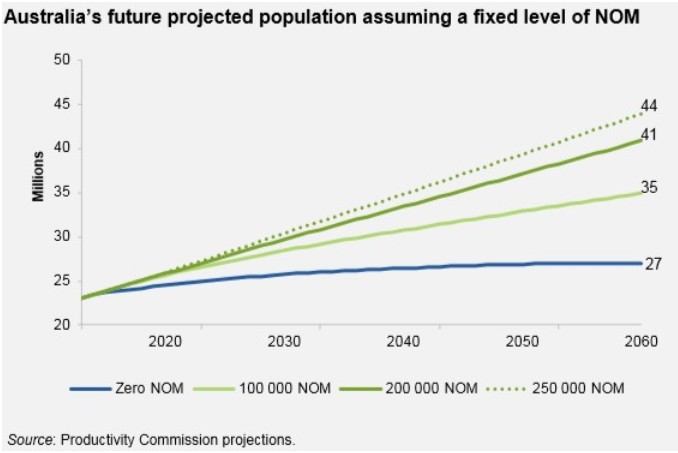When it comes to Australia’s immigration program, you would be hard pressed to find a bigger liar than Prime Minister Scott Morrison (see here, here, here, here, and here).
Yesterday, Scott Morrison was interviewed by News.com.au, where he supposedly exposed “Australia’s biggest immigration myth” that population growth was being driven by permanent migration:
PRIME Minister Scott Morrison has taken aim at Australia’s obsession with population growth, saying it is a “fairly irrelevant statistic” and immigration policy is far more nuanced than many of us realise…
He identified a pervasive myth at the heart of the immigration debate — that permanent migrants from overseas are the biggest strain on Australia’s infrastructure.
He said temporary migration and natural population growth, caused by the people who already live here having children, were far more significant factors…
“When it comes to population growth at the moment, there are 10 extra people that have got on the bus. Just over four of them are temporary migrants. Just under four of them were born here, a natural increase. And only two of them are permanent migrants”…
The numbers back him up. According to the Bureau of Statistics, Australia’s population grew by 1.6 per cent, or 388,000 people, in 2017.
A huge chunk of that — 38 per cent — came from the natural increase category. Among the rest, temporary migrants easily outnumbered permanent migrants…
“The idea of average population growth is about as helpful as average rainfall. It has the same practical meaning,” he said…
Reporters Sam Clench and Malcolm Farr should be chastised for letting Morrison get away with this statistical butchery, let alone claiming that “the numbers back him up”, which is flat wrong.
It is true that most migrants enter Australia as temporary residents. But this is irrelevant. Many then convert to permanent residency, thus extending their stay in Australia indefinitely and adding to Australia’s population base over time – both directly and indirectly as they have children (counted as natural increase).
Indeed, the Productivity Commission has noted that “temporary migration is an established pathway to permanent migration” and that “around half of all permanent visa grants went to people already in Australia on a temporary visa”.
So, without the ability to convert to permanent residency once in Australia, these temporary migrants would be required to leave, thereby preventing Australia’s population from increasing via immigration, since migrant outflows would roughly match inflows over time.

Therefore, it is the permanent migrant intake that is the primary driver of Australia’s population increase since, unlike temporary migrants who must ultimately leave, these migrants remain in the country permanently and also have children (counted as natural increase), thereby continually adding to Australia’s population base.
Indeed, the 2016 Census revealed that Australia’s population increased by a whopping 1.9 million people (+8.8%) in the five years to 2016, driven by a 1.3 million increase in people born overseas (i.e. new migrants):


As we know, 86% of these migrants (1.11 million) settled in Australia’s cities, primarily Sydney and Melbourne, versus just 14% (187,000) that settled in Australia’s regional areas.
Sure, temporary migrants also boomed, and many would be captured in the above Census figures. But they increased by a relatively modest 382,000 over the past five years:

If this doesn’t highlight Scott Morrison’s bald-faced lies about the drivers of population growth, let’s conduct a quick thought experiment. If Australia theoretically slashed the permanent migrant intake to zero, there would be three broad impacts on population growth:
- It would reduce the flow of temporary migrants, since many migrants enter Australia on temporary visas first hoping to transition to one of the many permanent non-humanitarian visas handed out each year (capped at 190,000). Eliminating permanent visas eliminates the probability of gaining permanent residency and, therefore, the incentive to come to Australia in the first place.
- The temporary migrants that cannot transition to permanent residency because the permanent intake has closed would have to leave Australia, thus significantly lowering net overseas migration (NOM) and population growth.
- Fewer permanent residencies means less migrants having children, thereby reducing natural increase as well.
In short, if the permanent migrant intake was hypothetically reduced to zero, then temporary migrants would have to leave, inflows would roughly match outflows (over the longer-term), and NOM and by extension Australia’s population would barely increase:

If Australia’s mass immigration program now requires straight lies from the PM to defend it then it’s time to reassess its value.

